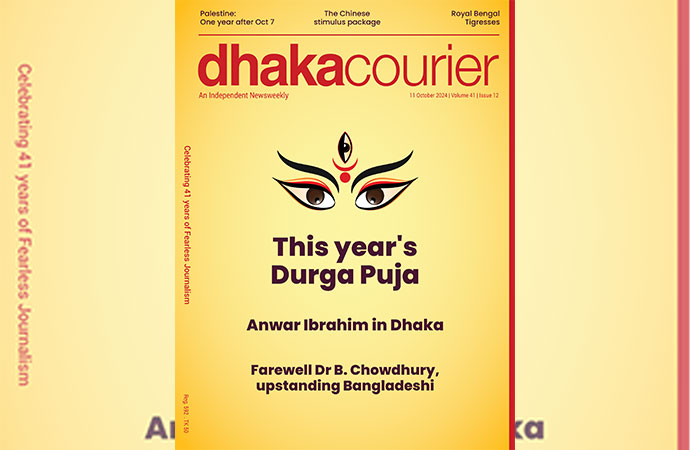Culture

Photo: Liberation War Museum
A three-week photo exhibition titled "Amra Rohingya" or "We are Rohingya" organised by the United Nations High Commissioner for Refugees (UNHCR) in partnership with the Liberation War Museum (LWM) began on Sunday at the Temporary Gallery of LWM, Agargaon in the capital.
The exhibition is taking place to mark this year's World Refugee Day, showcasing photos taken by Rohingya refugees and allowing for an intimate look into what life is like for people living in the largest refugee camp in the world.
Based on the Rohingyatographer magazine showcasing the photographs of ten talented Rohingya artists living in refugee camps in Cox's Bazar, this exhibit allows visitors to learn more about the individuals who have found refuge in Bangladesh, after fleeing violence and persecution in Myanmar.
This photographic exhibition explores themes of memory, hope, dreams, faith, beauty, craftsmanship, grief, loss, and love among the Rohingya refugees through 50 photographs.
Curated by David Palazón, Sahat Zia Hero, Amena Khatun and supported by UNHCR, the UN Refugee Agency, the exhibition features photography by Sahat Zia Hero, Ro Yassin Abdumonaf, Shahida Win, Azimul Hasson, Md Jamal, Abdullah Khin Maung Thein, Hujjat Ullah, Enayat Khan, Md Iddris and Omal Kahir.
Additionally, 11 photographs from the Liberation War Museum archives have generously been included, showing the lives and stories of Bangladeshi nationals, who in 1971 were forced to flee and live as refugees, during the Liberation War.
At the inauguration ceremony on Sunday, the welcome Speech was presented by Amena Khatun, Curator of Archive and Display, Liberation War Museum. Soo Jin Rhee, the Deputy Representative of UNHCR in Bangladesh, spoke about the initiative behind the photography exhibition, while the vote of thanks was presented by Mofidul Hoque, Trustee, Liberation War Museum. The inaugural ceremony of the exhibition was also attended by noted local and foreign diplomats in Bangladesh.
"Every year, we observe "World Refugee Day" with important events because, as a nation, we can correlate repatriation and refugee crises to our experiences during the Liberation War of 1971. We collaborated with UNHCR in this exhibition with 11 of our archived photographs, showcasing our own refugee experiences in solidarity to the Rohingya refugees," LWM Trustee Mofidul Hoque told UNB.
According to UNHCR, more than 50 percent of the Rohingya refugees in Bangladesh are children under the age of 18 with no access to formal education, and very limited access to skill development activities or higher education.
Amidst the harsh conditions in the camps, many young refugees have a strong commitment to learn skills by themselves and to teach others. Art and photography are for them a mode of expression, to deal with emotions and feelings in a positive way and ease the pain. By painting or taking photographs they are also keeping their culture and history alive, as they mostly focus on documenting their community's daily lives.
The exhibition shows how the lived memories of millions of Bangladeshis uprooted during the Liberation War, inspired the generosity of Bangladeshis who now host nearly one million persecuted Rohingya refugees from neighboring Myanmar.
The 'Amra Rohingya' exhibition will remain open until July 7 at the temporary exhibition hall of the Liberation War Museum.

























Leave a Comment
Recent Posts
No banks to be shut down: Fina ...
Some banks are recovering well, while others may continue to struggle, ...
27 envoys of European countrie ...
Diplomats representing 27 European countries, stationed in Dhaka and N ...
Unity to tackle climate change could be regional to ..
Mismanagement and overcrowding plague Dhaka Medical ..
Remarkable achievement for Bangladeshi artists at th ..
We need new economic framework that serves planet, p ..